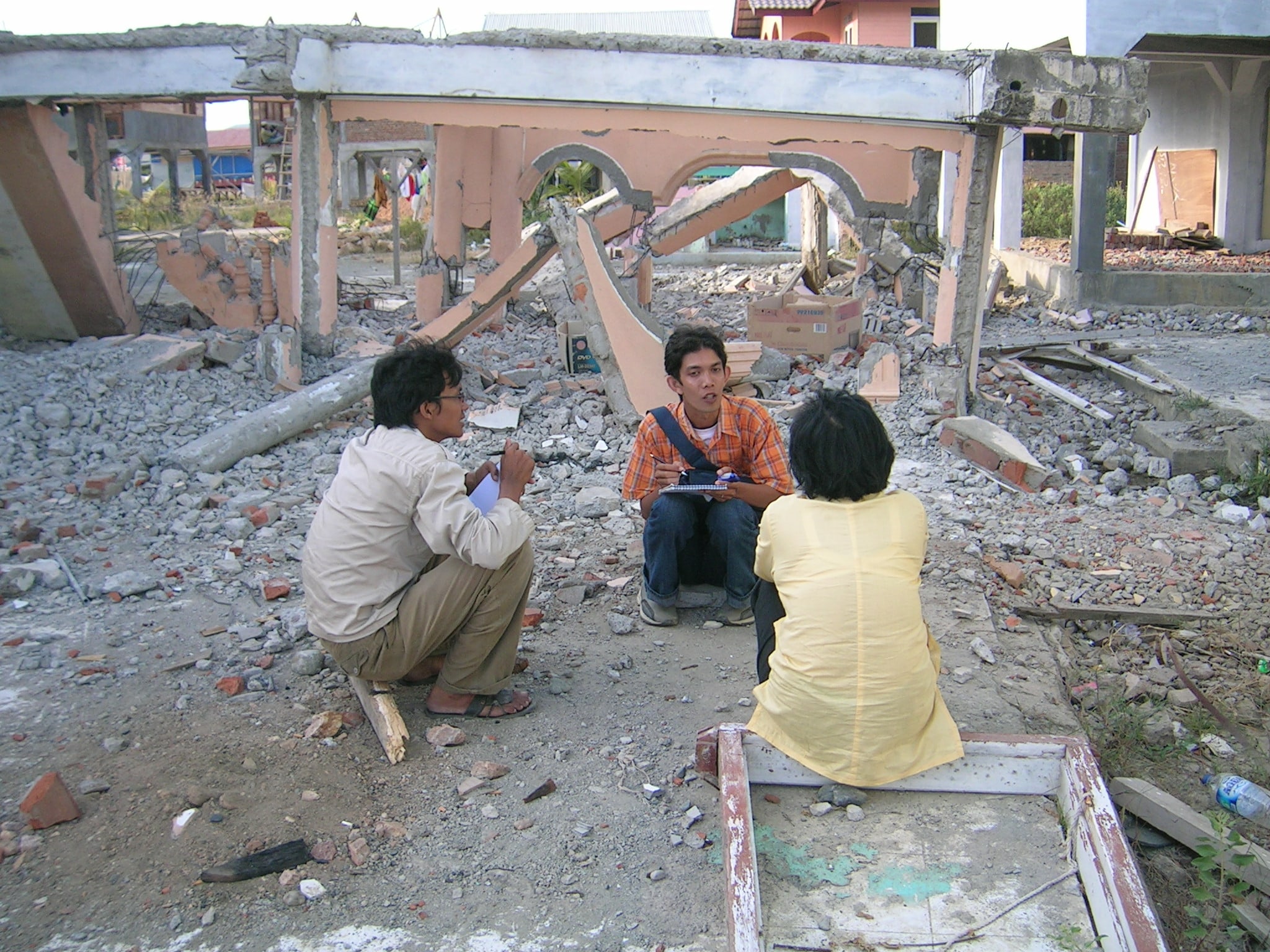The Aceh post-tsunami cultural heritage project
1. Context and origins
Banda Aceh is the provincial capital and largest city of the Aceh region, Indonesia. It is located on the western part of Sumatra Island, part of the Indonesian archipelago which has been recognized by its vibrant character of culture, arts, architecture and social history for centuries. The city formerly known as Bandar Aceh or City of Aceh, but after the Dutch occupied the region in 1873 they changed the name into Kutaraja or ‘the king’s fort’. Following the Indonesian independence, it was changed again to Banda Aceh until present time. As the provincial capital city, Banda Aceh becomes the center of Provincial Government’s administration as well as the center of economic, political, social and cultural activities in the region.
The project aims to assess condition of Aceh cultural heritage after disaster and how the cultural rehabilitation process in post-disaster situation. It will contribute to strategic actions of cultural heritage rehabilitation as well as to get lessons learned that will be useful for other similar situations all over the world.
The project aims to assess condition of Aceh cultural heritage after disaster and how the cultural rehabilitation process in post-disaster situation. It will contribute to strategic actions of cultural heritage rehabilitation as well as to get lessons learned that will be useful for other similar situations all over the world.
The massive Indian-Ocean earthquake and tsunami of 26 December, 2004 which hit Aceh province, Indonesia was one of the single largest disasters in documented history. Aceh suffered massive losses in terms of life and property, infrastructure and natural environment. On the one hand there is the urgent need to rebuild the destroyed areas, not to mention the social and economic problems which need to be solved. The danger in this process of reconstruction is that old, historically and culturally valuable building and complexes fall victim to the need to restore and rebuild the urban fabric of towns and villages. Responding to this concern, initiated by Aceh Heritage Community, the Aceh Post-Tsunami Cultural Heritage Project was carried out.
2. Fields of intervention
The main areas of activities are education, public awareness, research, conservation, networking and capacity building.
- Education and public awareness: organizing photo exhibitions, heritage trails, workshops related to architecture, history and cultural heritage, publication of public awareness media such as posters, brochures, and catalogs of old photographs.
- Research: surveys and studies related to architecture, history, and cultural heritage.
- Networking: participating in related networks, cultural exchange programs, seminars, workshops, exhibition at local and international level.
- Capacity building: organizing and participating in internal and external trainings to improve management, networking, and leaderships of the members, internally and externally.
- Conservation: archeological excavations, development of proposals for building conservations, taking part in maintenance of heritage building/sites.
3. Development and characteristics
The project was initiated and led by Yenny Rahmayati, the Executive Director of Aceh Heritage Community Foundation (AHC), with the assistance of Lestari Heritage Network based in Penang-Malaysia (formerly known as Asia and West Pacific Network for Urban Conservation or AWPNUC). This network connected AHC to foreign/international donor agencies and other heritage organizations outside Aceh such as Japan, Switzerland, Netherland, and Singapore. The main actor of this project is young people, most of them are students from local university. They come from different backgrounds such as architecture, economy, history, engineering, and so on. Meanwhile seniors and professionals participate as supporter or advisor. The key partners and allies of this project are Lestari Heritage Network, Nara Machizukuri Center-Japan and Asia Research Institute-Singapore. A variety forms of contributions and patnerships have been carried out through this project such as providing expertise, joint collaboration research, exchange program, and fundraising activities.
When a city experiences disaster, do not rely only with professionals. Try to get young people as much as possible as they are the main asset for the sustainable rebuilding city and community. Do not also expect much assistance from the government as they might be engaged more with humanitarian assistances such as basic needs, health, housing, education, economic recovery, etc. Try to get assistance from the available network to build collaborations including fundraising.
The project has produced real products that have been used by parties involved in post-disaster reconstruction process of Aceh. The main products are the comprehensive Inventory of Heritage Buildings and Sites after tsunami; research reports, publication of brochures, catalogs, posters and calendars. In addition, this project has increased the awareness of community especially young people to care about their heritage, and accommodated them with skills and capacity for further safeguarding and conservation efforts. This project also has given an actual example how cultural heritage can be an important tool in rebuilding city and community after disaster, a model that can be used and applied in other disaster areas all over the world in future.
4. Impacts
If it was possible to start the project again, we would place more emphasis on getting more young people to involve in the project and, also, we would have chosen to expand the coverage areas of the projects.
The project has given to us wonderful lessons. When a city experiences disaster, do not rely only with professionals. Try to get young people as much as possible as they are the main asset for the sustainable rebuilding city and community. Do not also expect much assistance from the government as they might be engaged more with humanitarian assistances such as basic needs, health, housing, education, economic recovery, etc. Try to get assistance from the available network to build collaborations including fundraising.
5. Other information
Website of the project: http://www.lestariheritage.net/aceh/
This article has been written by Yenny RAHMAYATI, executive director of the Aceh Heritage Community Foundation.
Contact: yenny.rahmayati(at)gmail.com
